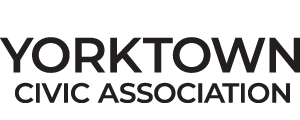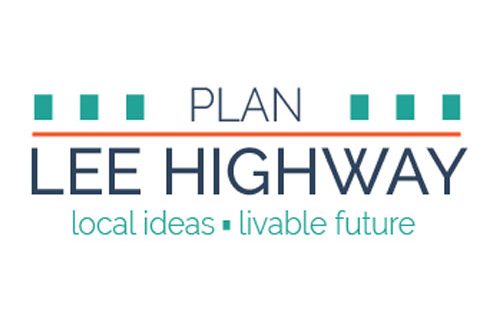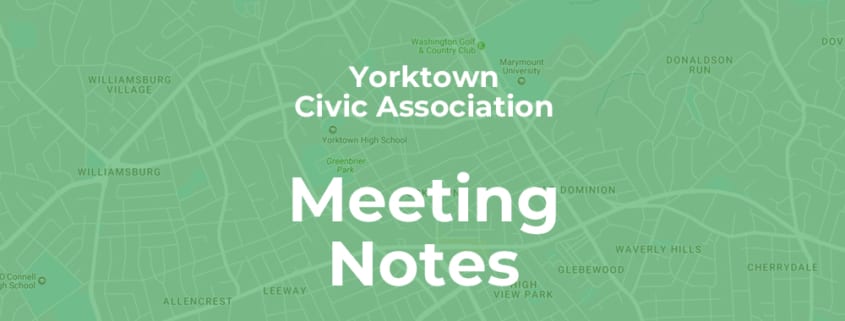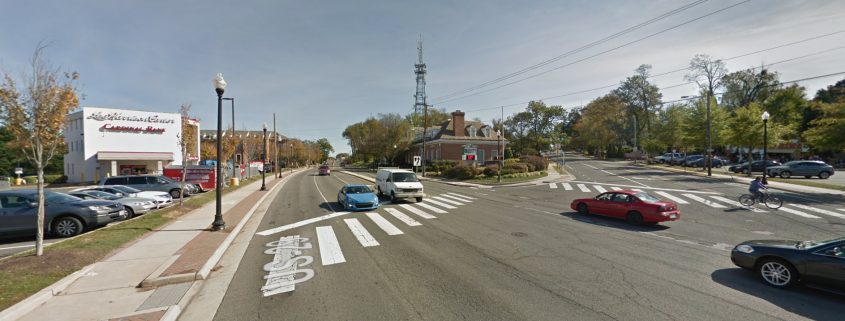On June 23, 2021 Mike Cantwell wrote to the Arlington County board to share the Civic Associations position on the Plan Lee Highway Scenarios:
“Arlington County Board and Plan Lee Highway Staff,
The Yorktown community includes many citizens who are deeply opposed to the increased density in each of the proposed Plan Lee Highway scenarios. Our community also includes many residents who welcome aspects of the plan. There are, however, a few things we can all agree on:
First, we would like a commitment from the county board that they will plan and budget for the purchase of land for green space and public use in our area. It is not sufficient to hope that private developers will subsidize the cost of green space in the future. According to a recent review by the Arlington County Civic Federation, the county has underinvested in public land park acquisition for over a decade. As a result, there is less park land acreage per 1,000 residents today than at any other time in the last 50 years. Increasing the density along Lee Highway without adding additional open space will further reduce the amount of park land per capita. In our area, we are lucky to have public spaces that are heavily used by existing residents. In order to maintain quality of life with increased density, more public spaces are necessary. Monies for those spaces should be considered and budgeted alongside the revised general land use plan for Lee Highway.
Second, we would like a commitment from the county board that they will plan and budget for schools and infrastructure commensurate with the increased density and population growth along Lee Highway. Planning for private development without planning for public infrastructure will necessarily lead to underinvestment and a more-expensive, less-thought-out game of catch-up in the future.
Third, we would like a commitment from the county board that they will not use eminent domain, now or at any point in the future, to achieve any portion of the Plan Lee Highway use scenarios. Our neighbors want assurance that they will retain the ability to decide what to do with their own property, even as the area may be changing.
Thank you for your consideration. We welcome further dialog with our civic association about this planning process.
Sincerely,
Mike Cantwell
President – Yorktown Civic Association
Amelia Frenkel
Vice President – Yorktown Civic Association”
On July 30, 2021 the County Board responded:
“Dear Mr. Cantwell,
Thank you for your message and for sharing your thoughts concerning the Plan Lee Highway study. I’m responding on behalf of my colleagues, and please know that your email and perspectives have been shared with and read by each member of the Board.
First, I’d like to underscore that the study is in its early stages. County staff, and PLH civic leaders, have sought to shape a process where community members can weigh in with your priorities and the positives and negatives of the various scenarios.
We appreciate that you’ve done so – and in your comments, as well as in those of your neighbors, it’s clear how much you value both the environment and quality of life in your community currently. Thank you for taking the time to share stories, as well as perspectives and concerns, with us on the County Board.
As you may know, Plan Lee Highway is designed to build upon the community’s vision and guiding principles as we work to create a walkable, “Main Street” type corridor, looking at everything from multi-modal transportation options to responsible development and public facilities. Currently, County government and civic partners from Lyon Village and other neighborhoods along the corridor are developing ideas and offering different possibilities to the community so we can better understand the impacts and benefits of different types of development along the corridor. These plans are also designed to explore and evaluate how government and the private sector can work together to help achieve the community’s aspirations for this “Main Street.” The goal of this phase is to open the door to meaningful discussions with the community so that staff can make informed decisions as the proposal evolves. With community feedback on preliminary land use concepts, the Planning Team will be refining the ideas and developing a Preferred Concept Plan which will be shared with the community in Fall 2021. Again, no conclusions or decisions have been made at this time.
The land use scenarios currently under discussion were developed with a number of things in mind, including the community feedback received during last year’s workshops. You may find it of interest to visit the Plan Lee Highway project page to review the latest presentation materials and reports. On this page, there is also a link to Frequently Asked Questions (FAQs) which provides answers to many key questions and concerns about the effort.
The most important thing to emphasize from these FAQs: The County has no plans to rezone existing single-family residential properties and will not be seizing private property through eminent domain as a part of this project. Regardless of what scenarios or zoning tools are ultimately recommended in the Plan Lee Highway study, each property owner will make their own decisions about whether to maintain their property unchanged, or whether to pursue changes and how.
We thank you again for reaching out with your concerns, as well as your meaningful reflections about what makes your Arlington neighborhood special, and we encourage you to stay engaged in the process.
Sincerely,
Katie Cristol
Vice Chair, Arlington County Board”






